Last updated on October 7th, 2025 at 11:24 pm
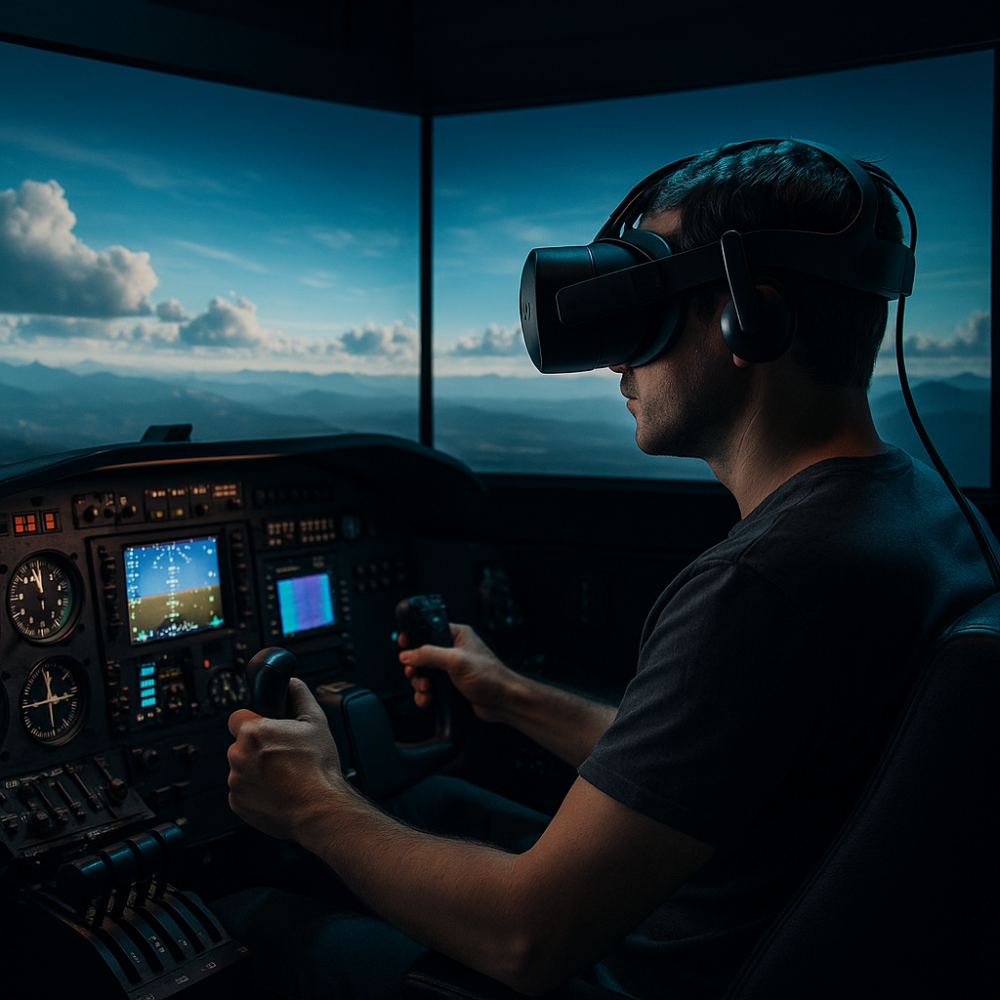
VR headsets have seriously come a long way, and when it comes to flight simulation, the one you choose can make or break your experience. The Meta Quest 3—and even the Quest 2 when linked to a PC—offer solid performance for casual and dedicated simmers alike. Then you’ve got the Valve Index, which really shines with its smooth tracking and crisp clarity. And if you’re all about panoramic views, the HTC Vive offers an expansive field of view with solid tracking performance—but it may require some setup adjustments to get everything running smoothly. Each headset has its own trade-offs when it comes to resolution, comfort, tracking quality, and, of course, your budget.
Starting with the Meta Quest 3, it’s a solid choice if you’re looking for something versatile. It can connect to your computer to tap into the full power of modern PCs, while also offering standalone features when needed. This flexibility makes it a nifty option for casual and hardcore simmers alike.
Valve Index users rave about the refresh rate and near-field clarity, even though it can be a bit on the pricier side. The visuals are super immersive, so it’s worth the investment for those seeking premium experiences. If you’re all about a wide field of view, then the HTC Vive might catch your eye. It’s great for that panoramic sight, although it may require some tweaking to perform at its best.
When weighing your options, consider what’s most important to you. Do you value crystal-clear visuals, an expansive field of view, or maybe solid overall performance across the board? Understanding the strengths and trade-offs of each headset can help you land on the best one for your needs.
Powering Your VR Experience: Essential PC Requirements
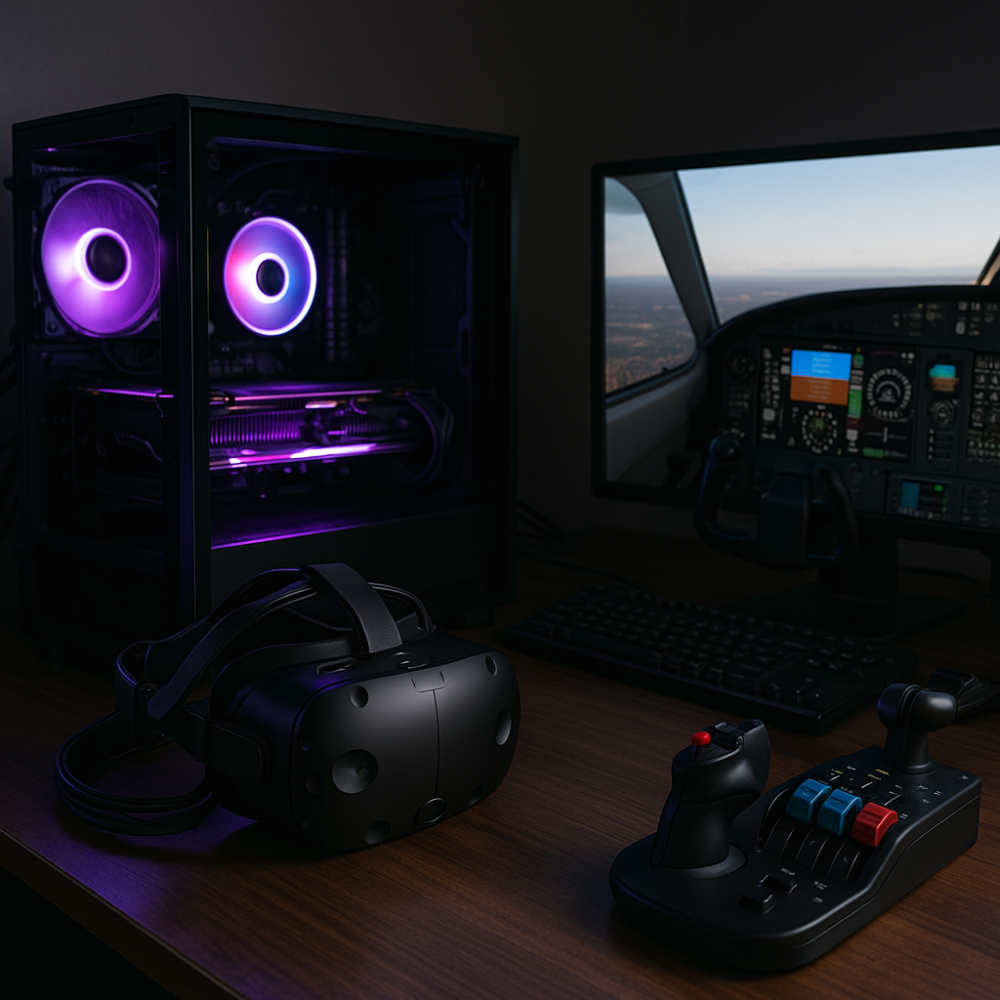
Getting your PC in shape for VR is like tuning an engine before the race. VR apps are demanding, and having the right hardware is key to a smooth, vibrant flight sim experience. First, let’s talk GPUs—your graphics card really pulls the weight here. An RTX 3060 Ti is your minimum starting point, though for the best results, especially in something visually rich like Microsoft Flight Simulator, shooting for an RTX 4070 or higher is recommended.
Then there’s the CPU. Aim for something like the Intel i7-12700F or AMD Ryzen 5 7600X at a minimum. These processors have the muscle to handle the complexities of VR applications, ensuring that your sim runs without a hitch or stutter.
Don’t overlook your RAM. With the detailed environments and high demands of flight sims, 32 GB is about what you’re aiming for in Microsoft Flight Simulator. Anything less might leave you facing annoying lags and even motion sickness from constant frame drops.
For those new to setting up their own PC, this might sound like a lot. But trust me, the payoff of a well-tuned system is huge. Running a flight sim with smooth visuals means you can focus on flying instead of trouble-solving. In VR, every tiny bit of latency or frame drop can break the immersion, pulling you out of the sky and back into your room. For more tips on getting the smoothest performance possible, check out our guide on How to Optimize Your PC for Performance in Flight Simulators.
Building a PC for VR isn’t just about matching specs—it’s about ensuring the whole system works in harmony. Be sure all your components can handle the workload, and regularly update software and drivers for the best performance. This extra care will keep your VR experiences smooth, letting you dive right into those incredible flights without a hitch.
Revolutionizing Depth Perception with VR: A New Dimension in Simulation
VR isn’t just about eye candy—it actually changes how you experience flight. Once you’re in the headset, altitude, speed, and distance feel way more real than anything you’d get from a flat screen. Taxiing, lining up on final, or managing complex landings all start to feel more natural, thanks to built-in depth cues and smooth head tracking. You’re not just looking at your aircraft—you’re sitting in it.
A lot of simmers say it’s one of the biggest game-changers in how they fly. That sense of real-world scale makes tough maneuvers feel less intimidating and adds a whole new layer of instinct. Even experienced pilots often mention how VR improves their situational awareness—tiny pitch changes, gentle climbs, or a banking turn just feel more authentic.
If you’ve only flown on a monitor, moving to VR can be a total eye-opener. Suddenly, flying through valleys or approaching a mountain airport doesn’t feel like a game—it feels like you’re really there. That added depth can sharpen your reflexes and make your flying feel more natural. If you want to explore how VR compares to other immersion upgrades, have a look at Achieving Ultimate Realism With Custom Equipment.
It might take a little adjustment, but for many, the payoff is huge. VR doesn’t just add immersion—it builds confidence, makes tricky approaches smoother, and turns routine sim sessions into something unforgettable.
Navigating Cockpit Interactions in Virtual Reality
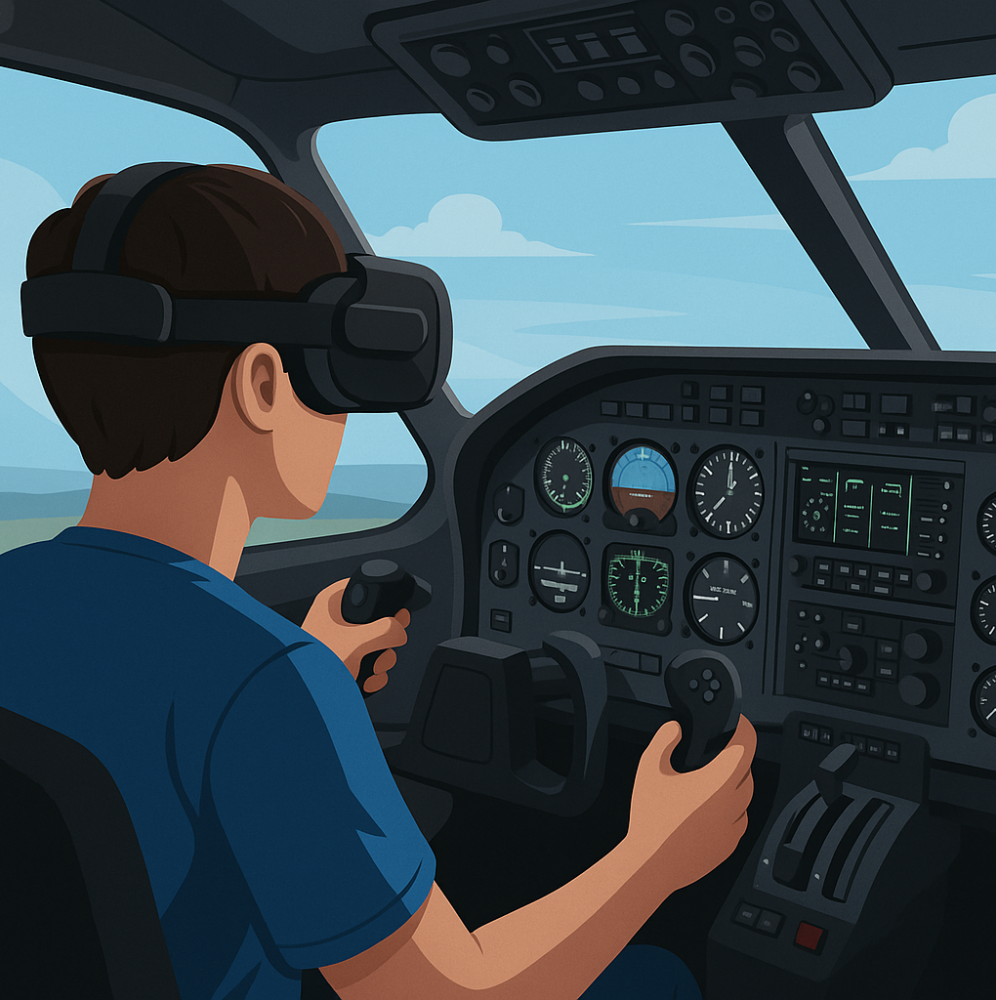
Cockpit interactions in VR are a whole new ballgame. No more being stuck in one fixed view—you can glance at your overhead panel, peek at the side window, or scan the instruments just like you’re in a real cockpit. It feels natural, and that freedom alone makes VR flying feel more alive.
VR controllers are fun to try, but let’s be real—they’re no match for real hardware when it comes to precision. That’s why most simmers don’t ditch their yoke, throttle, or rudder pedals. Instead, they use them alongside VR to get the best of both worlds: stunning immersion with hands-on control that feels just right.
While VR controllers can add to the novelty, having those physical controls within reach is crucial. They become muscle memory, allowing you to focus entirely on the flight without fumbling through virtual buttons. It’s like the perfect blend of old-school hands-on piloting with futuristic visuals.
Many simmers express that once you go VR, it’s hard to pull back. The freedom to look around your cockpit, coupled with familiar physical controls, can make flights more enjoyable and visceral. This combo becomes second nature over time, and soon you’re navigating instruments as naturally as a seasoned pilot. Pairing VR with the right hardware can take things even further—see The Best Joysticks for a Realistic Flight Experience.
To make the most of your VR flying experience, spend time setting up and calibrating your physical controls and VR settings. This harmony between tactile feedback and visual immersion is a leap towards an unrivaled sim experience. For even more ways to push realism, explore our list of Top Software for Air Traffic Control Simulation It’s like upgrading your entire escapade, and once you’re hooked, it’s hard to imagine flying any other way!
Optimizing Comfort and Software Settings for Extended VR Sessions
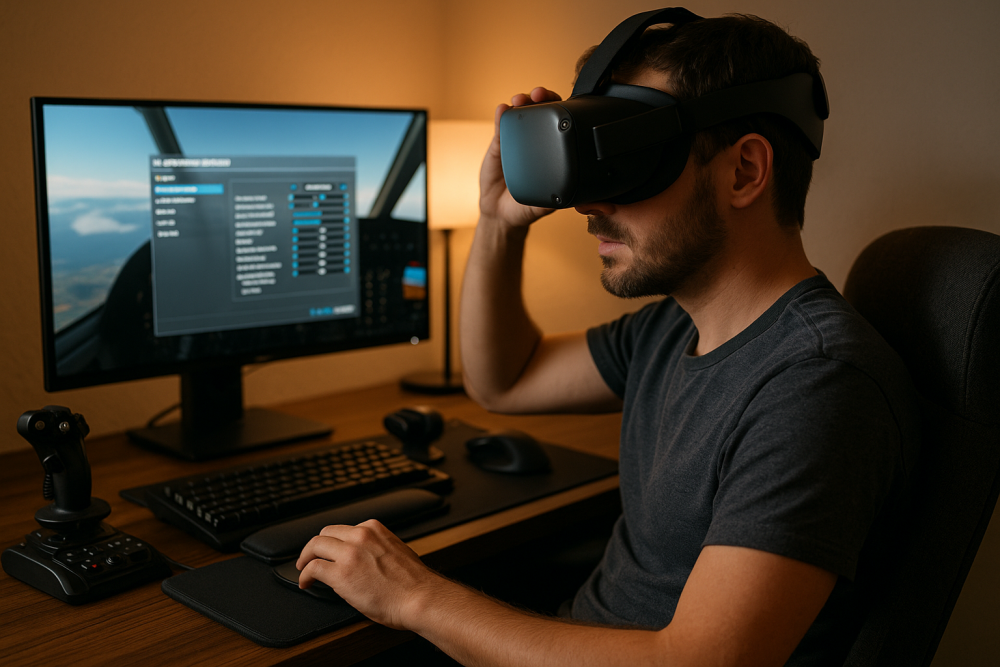
Comfort in VR goes beyond just the visuals—it’s about making sure your entire setup encourages long and enjoyable flying sessions. A lightweight headset with plush face padding can make hours of flying a breeze. Balanced head straps are your best friend here, ensuring the weight is evenly distributed so you’re not straining your neck or back.
Taking regular breaks is key. Motion sickness can creep up if you’re pushing through long flights without pause. Stepping away from the headset every now and then helps keep your senses in check and makes sure you keep enjoying those simulated skies.
Software customization can significantly influence your experience. Each simulator handles VR differently. For instance, Microsoft Flight Simulator 2020 offers stunning graphics but might require some OpenXR tweaks to run smoothly. X-Plane is considered to have excellent VR support with a smoother overall experience. DCS World is a favorite for its VR integration; though it’s heavy on your GPU, it offers one of the best immersive combat flight experiences.
Taking advantage of features like motion smoothing or reprojection can help maintain visuals without causing nausea during frame rate drops. They adjust the displayed frames to keep everything feeling smooth even when the system’s under load.
Virtual kneeboards and overlays can be lifesavers in a cockpit where you can’t easily look away from your instruments. Tools like Sky4Sim or OnAir Company provide handy on-screen references. Voice control tools like VoiceAttack allow you to keep hands on controls while issuing commands, freeing you up for more immersive flying.
Whether you’re fine-tuning settings or taking a quick break to ease your head, these small adjustments can make your time in VR much more enjoyable and sustainable. With each tweak, you’re one step closer to a seamless, more comfortable, and ultimately, thrilling sim experience.
💡 Recommended VR Headsets for Flight Simulation
**Please note: This post contains affiliate links. As an Amazon Associate, I earn from qualifying purchases at no extra cost to you.
If you’re ready to upgrade your sim setup, here are some of the top VR headsets mentioned in this guide. Each one brings something unique to the table—whether it’s clarity, comfort, or an ultra-wide field of view.
1. Meta Quest 3 VR Headset (128GB or 256GB Options Available) – A versatile standalone headset that shines when connected to a powerful PC.
2. Meta Quest 2 (128GB) – Still a solid choice for simmers, especially when paired with Oculus Link.
3. Valve Index Full VR Kit – Known for its high refresh rate and immersive tracking experience.
4. HTC Vive Pro 2 Full Kit – A premium, high-resolution PCVR headset with sharp 5K visuals and a wide 120° field of view, perfect for cockpit clarity.
Choosing the Right VR Headset for Your Flight Sim Setup
Valve Index users rave about the refresh rate and near-field clarity, even though it can be a bit on the pricier side. The visuals are super immersive, so it’s worth the investment for those seeking premium experiences. If you’re all about a wide field of view, then the HTC Vive might catch your eye. It’s great for that panoramic sight, although it may require some tweaking to perform at its best.
No matter which headset you choose, the right VR gear can completely transform your virtual cockpit. Think about what matters most—clarity, comfort, tracking, or field of view—and match it to your flight sim goals. And if you’re deciding whether to pair that headset with a yoke or joystick, our guide on Understanding Yokes vs. Joysticks: What’s Right for You? can help you choose the perfect match.
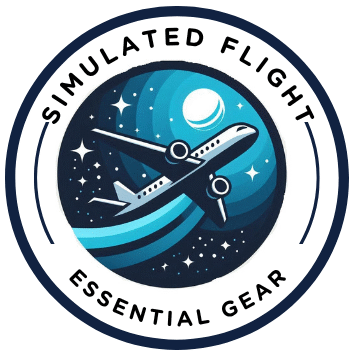
This was a really insightful read on VR headset options for flight simulation, and I like how you covered choices for different budgets and needs. The breakdown between more affordable, versatile headsets and high-end, ultra-immersive options makes it easy to see which might fit a simmer’s setup best. I especially appreciated the balance between performance and comfort, since both are key for long sessions in the virtual cockpit. I’m curious—do you find certain headsets tend to reduce simulator sickness, or are there specific settings and adjustments you’d recommend for making extended flights more comfortable?
Thank you for your kind feedback and for visiting my website again. From my experience, simulator sickness is less about the brand and more about setup and adjustment. For smoother frame rates, set the refresh rate to 90Hz or higher, and fine-tune the headset’s settings for eye comfort to prevent strain. For those prone to motion sickness, it’s best to start with shorter sessions and gradually increase the duration once your are comfortable.
This was a very nice rundown of the various VR headsets for flight simulation, and I liked how you discussed the pros and cons of each option. The trade-off between clarity, comfort, and resolution really caught my attention. I also appreciate some tips regarding the PC requirement. These little nuggets of information can save a lot of headache when attempting to achieve smooth immersive flights in VR!
Thanks again for the feedback! I’m glad the pros, cons, and PC requirement tips resonated with you. Finding the right balance between comfort and performance is key to maximizing the experience—especially when paired with a high-end PC.